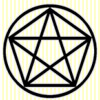| The pentagram |
| LUCIFER | VENUS | SATAN’s SYMBOL | ÉLIPHAS LEVI | ALEISTER CROWLEY |
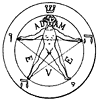 Lévi
|
Pentagram: from the Greek, “pente”, meaning five and “gramma”, a letter; the pentagram is a five pointed figure formed by producing the sides of a pentagon both ways to their point of intersection, so as to form a five-pointed star. Pentalpha: The triple triangle, from the Greek words meaning five and, alpha, the letter A. [1]
The pentagram (depending on usage, also called a pentacle, pentalpha, pentancle, pentagle, or pentangle) is thought by some occultists to trace its esoteric significance to an astronomical observance of the pattern of Venus‘ conjunctions with the Sun and has had many meanings in many cultures throughout the ages. [2]
A further distinction should be made for its usage in European heraldry where stars are generally termed estoiles or mullets. Estoiles, at least in England, will have six wavy rays. Unless specifically described, if the rays are straight the star is termed a mullet and has five points. It should also be pierced since, properly speaking, it does not represent a star but depicts the rowel of a spur. It has no connection with celestial stars or the pentagram. [3] |
|||||||||||||||||||||||||||||||||||||||||||||||||||||||||||||||||||||||||||||||||||||||
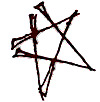 from Fara [12] (c. 2600 BCE)
|
De Vogel, Goff and Van Buren [1] tell us that the use of the pentagram dates back to Uruk IV (c.3500BCE) in ancient Mesopotamia where the general sense seems to be “heavenly body.” By the cuneiform period (post 2600 BCE) the pentagram or symbol UB means “region,” “heavenly quarter” or “direction”. “That this symbol always has a specific unambiquous meaning continues to be an unsupported hypothesis.”[13] It is found on potsherds in the location of Uruk (near the mouth of the Gulf), and more frequently on Jemdet Nasr (3100-2900 BCE) and Proto-Elamite tablets (3000-2500 BCE). [10] Examples elsewhere are infrequent. [2]
Historically, it does not appear to be equated with Venus. Venus is equated with the Sumarian goddess, Ishtar (Ishhara, Irnini, Inanna) whose symbol is an eight or sixteen point star. Amongst the Hebrews, the five point symbol was ascribed to Truth and to the five books of the Pentateuch. In Ancient Greece, it was called the Pentalpha. Pythagorians considered it an emblem of perfection or the symbol of the human being. The pentagram was also associated with the golden ratio (which it includes), and the dodecahedron, the fifth Platonic solid, which has twelve pentagonal faces and was considered by Plato to be a symbol of the heavens. Burkert says that the pentagram had a secret significance and power to the pythagoreans, and was used as a password or symbol of recognition amongst themselves.[3]
Solomonic texts of the Mediaeval period gave great importance to the pentagram, under the name “Solomon’s Seal.” Gershom Scholem writes, “In Arabic magick, the ‘seal of Solomon’ was widely used, but at first its use in Jewish circles was restricted to relatively rare cases. Even then, the hexagram and pentagram were easily interchangeable and the name was applied to both figures.” Latin versions of Solomonic texts, used the word “pentaculum” to refer to all the various circular devices associated with Solomon’s seal, even though most of them do not actually contain a pentagram. [6]
Here the pentacle represents the five wits, the five fingers, the five wounds ofChrist, the five pure joys of Heaven’s queen with her child and the five virtues: generosity, fellowship, purity, courtesy and mercy.
The upright pentagram resembles the shape of man with his legs and arms outstretched. Tycho Brahe, in his Calendarium Naturale Magicum Perpetuum (1582) illustrates a pentagram with human body imposed and the Hebrew for YHSVH associated with the elements. An illustration attributed to Brahe’s contemporary, Henry Cornelius Agrippa von Nettesheim, is of similar proportion and shows the five planets and the moon at the centre point. [] Other illustrations of the period by Robert Fludd and Leonardo da Vinci show geometric relationships of man to the universe.
The reference to it being open is ascribed to the contemporary knowledge that the planet Venus is not in exact resonance with Earth.
In ancient times the “Star of the Sea” was sometimes depicted as an inverted pentagram. This may explain why those early American flags that displayed inverted stars — such as that flown by Commodore Matthew Perry in 1854 — were connected with the navy. [20] |
|||||||||||||||||||||||||||||||||||||||||||||||||||||||||||||||||||||||||||||||||||||||
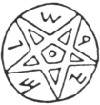 Jerusalem seal [9]
|
The pentacle’s use in the City Seal of Jerusalem has led to its confusion with the variously titled Seal, Shield, or Star of Solomon. Early Christians attributed the pentagram to the Five Stigmata of Christ or the doctrine of the Trinity plus that of the two natures of Christ. According to Biedermann, from then until mediaeval times, it was a lesser-used Christian symbol. [1] Its form implied truth, religious mysticism and the work of Creator. Roman Emperor Constantine I, after his defeat of Maxentius and the issuance of the Edict of Milan in 312CE, ascribed his success to his conversion to Christianity and incorporated the pentagram, one point down, into his seal and amulet. [12]
Although other authors have claimed the five-pointed star as a Christian symbol, describing it as the “Jesus’ star” or the “Star in the East”, a review of Christian art from the early Mediaeval period to the Renaissance will reveal few examples. [4] Becker refers to the pentagram as a symbol of Christ as Alpha and Omega, and as a symbol of the five wounds of Christ. The five-pointed star is also defined as a symbol of Christ, “the bright and morning star”: and, inverted, one point down, it represents the descent of Christ — i.e., His Incarnation. [5] An early depiction, reproduced by Eckhardt, from a carving on a wall in the Baptistory of St. John at Split in Yugoslavia is dated from the eleventh century. The site was originally the Temple of Aescielapius, a god of medicine. [6] (Encyclopedia Britannica,vol. 11, p. 107, terms it a Temple of Jupiter.)
While depictions of the five-pointed star or pentagram equating it with Jesus are rare, it should be also noted that they are non-existent in any depiction of the Devil or Satan before Éliphas Lévi’s nineteenth century Baphomet. [7] |
|||||||||||||||||||||||||||||||||||||||||||||||||||||||||||||||||||||||||||||||||||||||
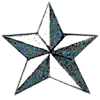
|
The masonic significance of the pentagram is controversial. While it often appears on masonic regalia and decorative illustration, nowhere is it mentioned in masonic rituals or lectures. This does not mean though, that individual freemasons, aware of its historical usage, have not used it to illustrate their own personal interpretations of Freemasonry. The “Blazing Star” of masonic usage is not to be confused with the five-pointed star. Early tracing boards depict a sixteen or fifteen point star, one notable five pointed pentalpha and a number of “glories” with no discernable number of points. Mackey points out that the earlier tracing boards depicted a star with five straight points superimposed over one with five wavy points. Freemasonry has traditionally been associated with Pythagoras, and among Pythagoreans, the pentagram was a symbol of health and knowledge; the pentagram is consequently associated with initiation, as it is in masonic iconography. From Coil’s Encyclopedia: “The Pentalpha is said to have had a great many symbolic and mystical meanings, but it has no application to Freemasonry….” Mackey tells us “The Medieval Freemason considered it a symbol of deep wisdom, and it is found among the architectural ornaments of most of the ecclesiastical edifices of the Middle Ages.” There are also many examples of both the pentagram and five-pointed star being used as stonemasons’ marks during the Mediaeval cathedral building period. Although claims have been made for earlier usage, the greater number of examples date from the twelfth through sixteenth centuries. [1] George Godwin claims that these marks were handed down from generation to generation and could still be found up until the nineteenth century. [2] One notable early use of a pentalpha in Freemasonry is the mark of Sir Robert Moray, who used it when he signed the Minutes of the Lodge of Edinburgh, Mary’s Chapel sometime after his initiation on May 20, 1641. He is recorded as using it in his signature prior to this date so, although he referred to it as his mason’s mark, it was not derived from masonic teachings. Later it appears on the titlepage of a collection of masonic lectures, The Spirit of Masonry, published in 1775. The use of a five-pointed star or pentagram in some Grand Lodge seals and banners as well as on the collar or jewels of office worn by the masters of lodges and Grand Masters of Grand Lodges is of interest to students of masonic history and art. But its absence from the ritual and lessons of Freemasonry point out that its value is ornamental and any symbolic value is a matter of personal opinion. Many masonic authors have expressed their opinions on the topic, but with no masonic authority. The pentagram, or five-pointed star, can be interpreted as a representation of the golden ratio. The golden ratio was of great importance to architects and stonecutters. Whether early freemasons made this interpretation is a topic of some controversy. Those who would freeze the angle of the compasses in the masonic square and compasses at 72° to equate it with the pentagram, ignore the many representations which set the angle at anywhere between 32° and 90°. As regards that appendant body, the Order of the Eastern Star, Mackey notes that Rob Morris, author of their ritual, wrote that the choice of name was made to correspond to the masonic Five Points of Fellowship and the pentagon which he termed “The signet of King Solomon.” |
|||||||||||||||||||||||||||||||||||||||||||||||||||||||||||||||||||||||||||||||||||||||
 Guaita
|
It has long been a truism within occult circles that the pentagram, when one point is ascendant, is a symbol for the positive principle, and when two points are ascendant it is a symbol for the negative principle. This is derived from a claim made by Éliphas Lévi that the direction of the rays of the pentagram determine if it represents the good or evil principle: one point up representing order and light, two points up representing disorder and darkness. Lévi gives no justification or citation for this arbitrary distinction and goes on to arbitrarily equate the pentagram as a symbol for the Baphomet or goat headed god. [1] This ignores, or distorts, the pentagram’s inclusion, one point down, in Constantine’s seal, the later mediaeval depiction of it as a medical symbol of health, and its Christian representation as a symbol of the Transfiguration of Christ. Aleistar Crowley wrote that the point down pentagram indicates the individual (microcosm) in a “Solar orientation”, meaning not “earth oriented”. Also that it had been used as a symbol of the Baphomet, the great androgyne. He interpreted the “averse” pentagram to indicate the New Aeon transcendance of the old Osirian/Christian limitations. [2] Manly P. Hall made the further startling claim that ‘the star may be broken at one point by not permitting the converging lines to touch; it may be inverted by having one point down and two up; it may be distorted by having the points of varying lengths. When used in black magic, the pentagram is called the “sign of the cloven hoof,” or the footprint of the Devil.’ Like so many esoteric writers, he fails to provide any evidence. [3] No known graphical illustration associating the pentagram with evil appears until Lévi in the nineteenth century. The Inquisition of the early 1300s does not appear to have made a connection between the pentagram and the Knights Templar’s alleged worship of the Baphomet. Neither the Rule of the Order, the eleven charges against the Knights Templar, nor the eight Papal Bulls promulgated against them make any mention of the pentagram or its association with the Baphomet. Claims that the pentagram was significant to the Templars appear to be unfounded. Its use in hermetic manuscripts is rare. [See Appendix I for additional illustrations.] It is only in the later twentieth century, and the creation of the American Church of Satan, that the inverted pentagram has become a popular symbol for Satan. They ascribe its usage to its appearance in Oswald Wirth’s La Franc-Maçonnerie rendue intelligible a ces adeptes II, (“Le compagnon,” Paris: Derry-Livres, 1931, p. 60), based on a drawing by French nobleman and occultist Stanislas de Guaita (La Clef de la Magie Noire, 1897), “The Sigil of Baphomet”. [1]
|
| There is no connection between Satanism which can be defined as a Christian heresy, and Wicca, which encompasses a range of faiths based on a pantheistic earth worship or modern interpretations of what has been termed the Old Religion. Wicca,though, has also laid claim to the pentagram. On 30 June 2006 The Pagan Pride Project issued a statement in “support of the efforts of other Pagan organizations, including the Lady Liberty League, the Covenant of the Goddess, the Aquarian Tabernacle Church, the Covenant of Unitarian Universalist Pagans, Circle Sanctuary and others, to influence the United States Department of Veterans Affairs to grant official recognition of the pentacle, a universally recognized symbol of Wicca and other Pagan faiths, as a symbol permitted on the headstones of Pagan servicepersons who have died as members of the American armed forces.” |
Summum, while not wiccan, can be listed under the broad catagory of “new age”. They have registered what they term the Divine Logo, the pentagram, circumscribed by a pentagon and circle, as the trademark of Summum (U.S. Reg. No. 1,270,427). 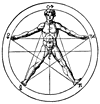 Agrippa (1531) [2]
| There is no Biblical authority for claims that Lucifer and Satan are names for the same being. |
In Revelation, Jesus referred to himself as the bright and morning star (Rev 22:16). In 1263 Pope Clement V commissioned the Franciscan monk, Roger Bacon, to investigate apparent problems arising from this translation. Bacon discovered papers by Jerome where, on his deathbed, the latter recanted the Latin Vulgate translation due to errors caused by haste. Jerome particularly singled out the Isaian translations. Bacon’s report that “Lucifer” was the Messiah and not the devil earned him incarceration until he recanted. [1] 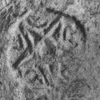 Jerusalem seal [1]
| A curious, and somewhat astronomically irrelevent, occurance of cyclical positions of Venus will determine the points of a pentagram figure in the morning or evening sky during certain times of the year. Plotting the recurrence of Venus’ westward elongation from the Sun, over five consecutive synodic periods, will create the points of a pentagram. Historically though, the pentagram has not been a symbol for Venus, neither planet nor goddess. |
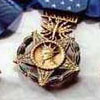 Medal of Honor (USA)
| Recalling the distinction between a pentagram, or endless knot, and a five-pointed star; the pentagram is rarely used outside of esoteric or occult circles. Its use in promoting rock music — specifically heavy metal — is noteworthy only as an example of the evolution of the symbol and the lack of real content. |
That said, the five-pointed star, as a symbol of power and authority, bravery, honour and virtue, is an ever-present icon. Almost exclusively depicted with one point up, the five-pointed star is found on police badges, military vehicles, fourteen American state flags and on at least forty-five national flags. The Moroccan flag was the only one to depict the pentagram until 6 February 1996 when the Ethiopian government added a yellow pentagram on a blue disk to the more popular flag of green-yellow-red horizontal bands, adopted in 1897. A rare usage with one point down can be found on the American Congressional Medal of Honor. Further study would reveal many other uses of the five-pointed star in corporate logos, commercial advertising, cinema, popular culture, and in all forms of graphic design. It is not exclusive to any one nationality, religion, faith or creed. It simply represents what the user wants it to represent. Appendix i |
| A selection of Mesopotamian, Mediaeval, Renaissance and other pentagrams: |
<freemasonry.bcy.ca/anti-masonry/pentagrams_additional.html> Appendix ii |
| Examples of pentagram usage from the mid-nineteenth century to the present: <freemasonry.bcy.ca/anti-masonry/pentagrams02.html> |
Appendix iii |
| Examples of pentagram usage in corporate logos and commercial advertising. |
Appendix iv |
| Examples of pentagram usage from cinema. |
Appendix v |
| Examples of pentagram usage from popular culture. |
|
|||||||||||||||||||||||||||||||||||||||||||||||||||||||||||||||

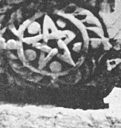
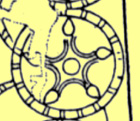
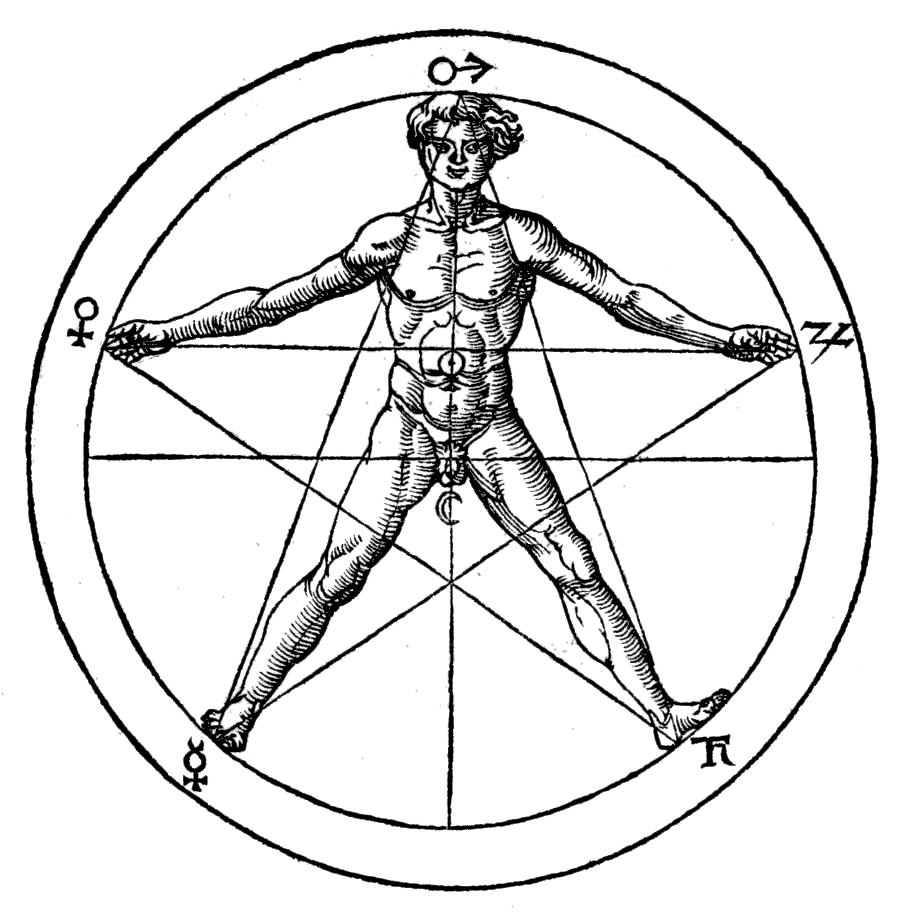
 10>
10>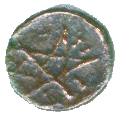
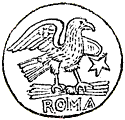
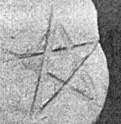 Jemdet Nasr
Jemdet Nasr  Constantine’s seal
Constantine’s seal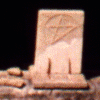
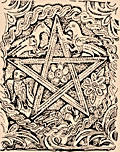 Baptistory of St. John
Baptistory of St. John 